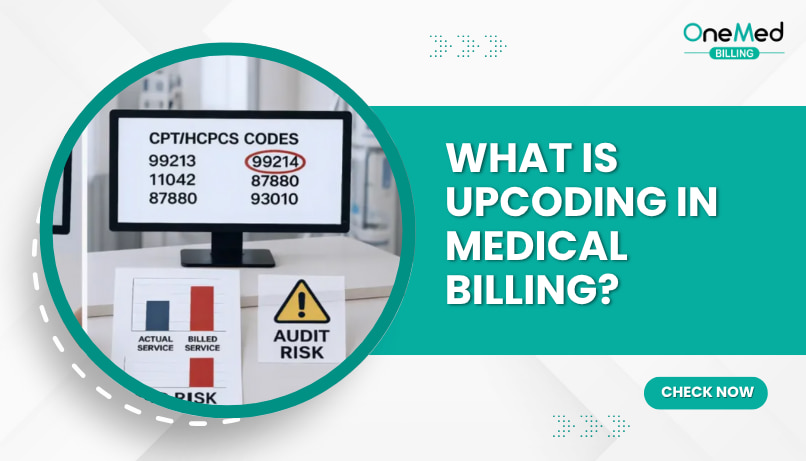What Is a Good Clean Claim Rate for Healthcare Providers?
- July 22, 2025
- 0 Comments
- Claims Submission
Managing claims is one of the most important parts of running a successful healthcare practice. Clean claim rates can tell you a lot about how well your billing process is working. A good clean claim rate helps you get paid faster and with fewer problems. But what exactly is a “clean claim rate,” and how do you know if yours is good enough?
In this blog, we’ll explain what clean claim rate means, what a good number looks like, and how you can improve it to keep your practice running smoothly.
What Is a Good Clean Claim Rate?
Good Clean Claim Rate is the percentage of claims that get paid by insurance on the first try, without any errors, missing details, or rejections. A higher clean claim rate means fewer delays, faster payments, and less time spent fixing billing mistakes.
Most healthcare practices should aim for a clean claim rate of 95% or higher. This means at least 95 out of every 100 claims should be accepted and paid without any issues. A 96% to 99% clean claim rate is even better and shows your billing process is working smoothly.
If your clean claim rate drops below 90%, it’s usually a red flag. It can mean too many mistakes, missing documents, or claims being filed too late. A low clean claim rate often leads to slower payments and more stress for your team. Keeping this number high is key to getting paid quickly and keeping your revenue flow steady.
Why Clean Claim Rate Drops

Sometimes, even busy practices struggle with low clean claim rates. This usually happens because of common but avoidable mistakes in the billing process. Here are some of the main reasons why clean claim rates drop:
Incorrect Patient Details
Small mistakes with patient information, like typing the wrong insurance ID or date of birth, can lead to claim rejections. Even minor errors can cause delays in payment.
Coding Errors
Using incorrect procedure codes or forgetting important modifiers often leads to denied claims. Accurate medical coding is key to keeping claim rejections low.
Missing Documents
Claims that are sent without required paperwork, such as referrals or prior authorizations, are usually rejected by insurance companies. These missing documents lead to extra work and payment delays.
Late Claim Submissions
When claims are filed after the deadline, insurance companies may automatically deny them. Submitting claims on time helps prevent these avoidable denials and keeps your payments flowing.
How to Improve Clean Claim Rate

Improving your clean claim rate is one of the simplest ways to speed up payments and reduce billing headaches. The goal is to make sure claims are submitted correctly the first time, so you avoid rejections and payment delays. Here are some practical ways to raise your clean claim rate and keep your revenue cycle healthy:
1. Double-Check Patient Information
Many claim rejections happen because of basic patient errors, such as incorrect insurance numbers, wrong spelling of names, or outdated coverage information. To avoid this, make sure your front desk or intake team always verifies key patient details during every visit. This includes:
- Valid insurance ID number
- Correct spelling of name and date of birth
- Current coverage status
- Any needed authorizations or referrals
Accurate patient data at the start of the visit prevents errors later in the billing process.
2. Use the Right Medical Codes
Incorrect or outdated medical codes are one of the top reasons for denied claims. To avoid this, make sure your billing team stays up-to-date with the latest coding updates and payer-specific guidelines. Invest in regular coding training and, if possible, use tools like electronic health records (EHR) systems with coding support. Using the correct CPT, ICD-10, and modifier codes reduces errors and increases your chances of first-time approval.
3. Submit Claims On Time
Timely submission is critical for a high clean claim rate. Every insurance company has filing deadlines, and late claims are often denied automatically. To avoid missed deadlines:
- Set a routine for submitting claims within 24-48 hours after each patient visit.
- Use billing software or reminders to track pending claims.
- Regularly audit your claims pipeline to make sure no claims are sitting unfiled.
Submitting claims quickly speeds up payment and prevents unnecessary denials.
4. Track Denials and Fix Mistakes
Keeping track of denied claims helps you find patterns in your billing mistakes. Create a simple denial log or dashboard to record:
- The reason for each denial
- Which payer denied the claim
- How it was corrected and resolved
Review this log regularly to spot common issues, such as coding errors or missing documents, and fix these problems at the source. Over time, this reduces repeated errors and helps raise your clean claim rate.
5. Consider Outsourcing Billing
If your team struggles to manage claims or you have a high denial rate, outsourcing your billing to a professional RCM company can be a smart option. Outsourcing takes the pressure off your staff and brings in billing experts who handle:
- Correct coding
- Timely claim submission
- Quick follow-ups on denied or unpaid claims
- Regular reports on claim performance
A good billing partner focuses on keeping your claims clean, helping you get paid faster with fewer billing headaches.
Conclusion
Keeping a high clean claim rate is one of the easiest ways to make sure your practice gets paid properly. Aiming for 95% or higher means your claims are going through smoothly, payments are coming in faster, and you spend less time dealing with billing problems. It’s a simple habit that can lead to stronger cash flow and fewer payment delays.
Checking your clean claim rate regularly also helps you catch small problems early. You can see if errors are happening with patient details, coding, or submission times, and fix them before they grow into bigger issues. The more you focus on clean claims, the easier it becomes to keep your revenue steady and your practice stress-free.






Comments (0)